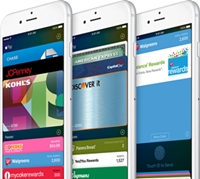Report: AdReaction – 1/3 of Poles are supporters of multiscreening
MillwardBrown has prepared an AdReaction report on multiscreening and its marketing aspect. Presented in a very aesthetically pleasing, interactive form, it encourages people to learn more about this phenomenon. The company studied the marketing aspect of multiscreening by surveying the screens of TVs, smartphones, laptops and tablets in dozens of countries.
A total of 12,000 respondents from 30 different countries were surveyed for the report. The results for each country are shown in a separate presentation. This gives us insight into the results on the multiscreening phenomenon in USA as well.
When we use screen data?
Televisions are devices that Poles use mainly in the afternoons and evenings. The highest activity is around 8 pm, and the whole range of increased use is between 6 pm and more or less midnight. Smartphones are used by us regularly throughout the day, However, slightly increased use falls in the morning and early afternoon hours.
Most of us apparently reach for the phone after waking up or at the time of the first or second breakfast. We use laptops in a “two-wave” fashion – the first increase is in the midday and early afternoon, approx. 6pm – which is when most of us leave work – a slight decline is noted, and in the early evening we again use desktop devices heavily. We use tablets at similar times to TVs – a little in the morning, very little at noon and relatively much in the evenings and at night.
67% of us prefer one screen to several at the same time
67% of Poles use one device at a time. Slightly more than a third of us instead use several devices at the same time, and the results in this regard are very similar to those globally. During the day, the average Pole spends 98 minutes in front of the TV, 90 minutes using their smartphone, 132 minutes – from a laptop and 61 minutes – from a tablet. Our results are somehow comparable to the global scale, but some differences are apparent – calculating the global average, users spend the most time on smartphones (147 minutes per day). These time results also include the use of several screens simultaneously – specifically, a TV and an additional device.
Typically, of all the average times of daily use of a given device, on average we can count half an hour of use as multiscreening.
Complementing the TV? Not necessarily
MillwardBrown also asked respondents why they use other screens as a complement to watching TV. 49% of Poles use a second screen in addition to what they currently watch on TV. 51%, however, do not combine the content displayed on the TV with that of the second screen.
22% of us, while watching TV, look for more information about what is currently on TV using other devices. 14% comment on the content they are watching with other users, e.g. via social networks. However, we are far more likely to use second screens for purposes completely unrelated to what we are currently watching on TV. Nearly half of us – 47% – use a second screen to occupy their time during commercial breaks. 28% are in contact with friends during this time, but do not discuss the content they are watching.
34% believe that a TV program is not interesting enough to give it 100% of their attention. For 31%, the TV serves only as some sound background for other activities, and these people do not watch what is happening on the TV screen at all. Nearly 1/4 reach for another device because another person has decided for them what to watch and they are not interested in it at all (the effect of traditional “battles over the remote control”). 32% use the second screen because they are busy and have other things to do (well, it would go faster if they turned off the TV at the time 😉 ).
Multiscreening marketing in a nutshell
Below is an inforgraphic prepared for the report that shows global data on multiscreening. The infographic begins with the news that people now own more screens than ever before. In 2021, the following were sold 217.1 million tablets and one billion smartphones.
Not only do we own more screens, but we are using them for longer and longer periods of time. In total, we spend an average of 7h per day using different screens, of which 2.5h are devoted to smartphone screens. Perhaps surprisingly, residents of countries such as Nigeria, Indonesia, Kenya and the Philippines devote the most time to their smartphones.
Watching TV 37% of the time ends up “switching” to a smartphone.
So the potential for multiscreening is quite high, and MillwardBrown offers some marketing advice at the very end of the infographic. Keeping multi-screen communication in mind and planning marketing activities, we need to be consistent, connected, thoughtful and concise. What this means? First of all, it is important to keep in mind the homogeneity of content transmitted through different channels. Second – connected – so when planning a campaign on one screen, it is worth considering how to connect it to other screens to make it interesting and engaging for the audience.
Third – each screen has its strengths and weaknesses. When choosing the main marketing communication channel, let’s be guided by these strongest aspects. Fourth and last, let’s use short, catchy content that users can share among themselves, and do it in such a way that they want to do it.
First entertainment, then dry facts!
The report is noteworthy for its systematized knowledge of many countries. In addition, the company gives some simple but very practical advice, and in reality, unfortunately, it happens that the most obvious ones are the easiest to forget.
You can find the full report at this link: http://www.millwardbrown.com/AdReaction/2021



